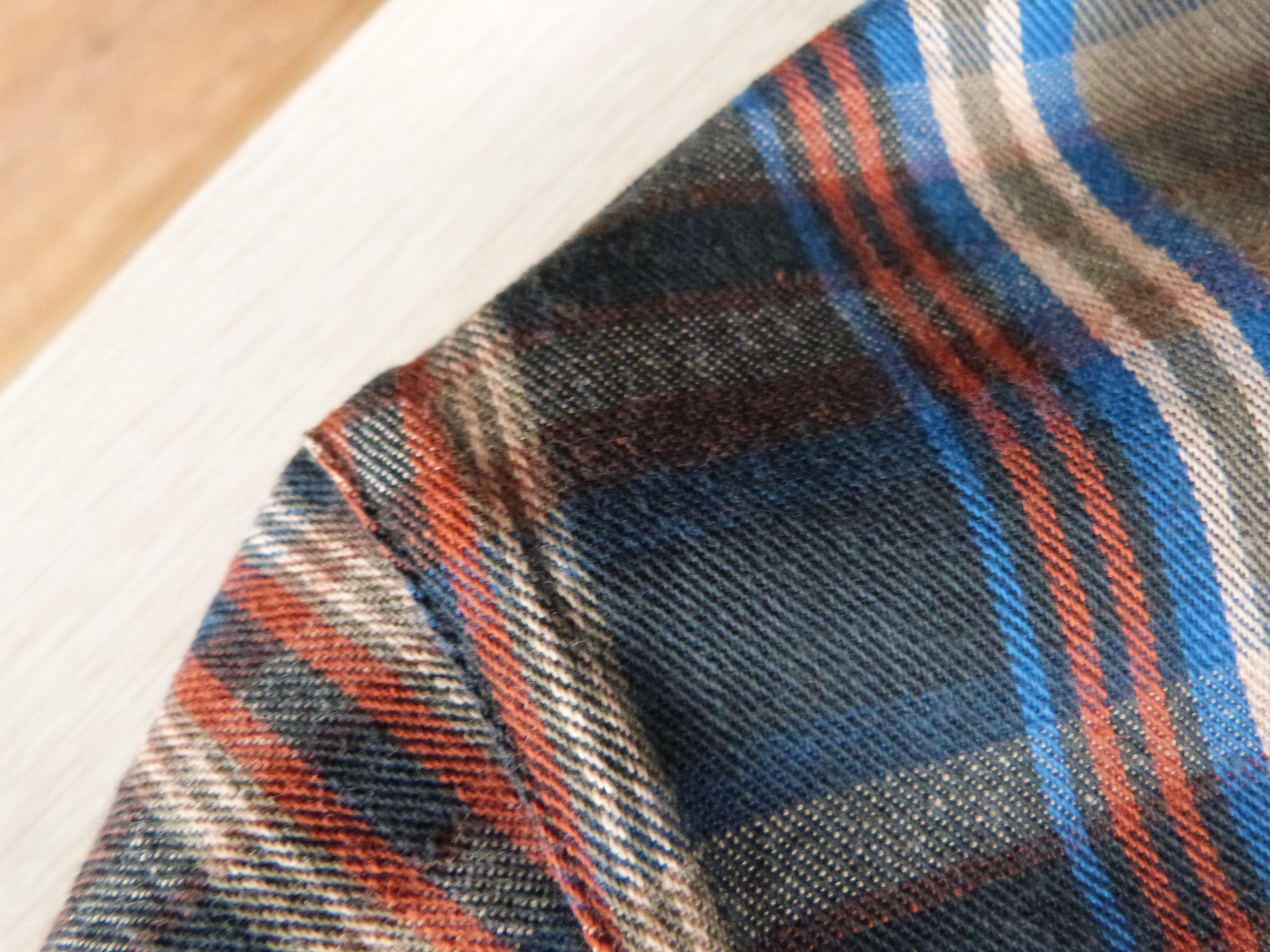Heavier weight fabrics that tend to fray a bit can often benefit from a flat-fell seam, just like you'd see on the sides of your jeans. But what if you don't want the seam on the outside of your garment? Well, you can achieve the same basic look with the seam on the inside. This is called a mock flat-fell seam, though some call it the mock jean seam.
The process for putting this seam together is very much like the flat-fell seam, except you work on the inside of your garment. This means you start with a standard seam, sewn right sides together. So if you decide after you've already started sewing that you want a flat-fell seam, and you don't feel like taking everything apart, you can settle for a mock flat-fell seam.
To create this flat and secure seam, press both raw edges to one side. I like to press them toward the back of the garment, but it doesn't really matter. Just make sure you press all your seams in the same direction. It makes everything look nicer in the end.
You should now have the raw edges of your seam allowance together, one on top of the other. Trim the bottom seam allowance to ⅛". Careful. Don't cut the top one, because you'll need that seam allowance to encase the other. Fold the uncut seam allowance around the other and press so that the uncut seam allowance is folded in half and fully cases the edge that you cut. Press firmly so that it doesn't move around on you.
Now to stitch it in place. Topstitch as close to the folded edge as you can, going slow and steady so you don't miss. Also topstitch on top of the original seamline. This will give you a nice finished seam inside and two perpendicular lines of stitching on the outside. All nice and finished with no raw edges visible inside or out.
This is a good choice for sporty garments or garments you want to make reversible. It takes a little work and some precision stitching, but it's excellent practice and is well worth the effort.
Welcome to Aislin’s Designs—a cozy corner for crafters who love sewing, knitting, and crochet. Here you’ll find patterns, project ideas, tips, and tutorials to inspire your next handmade creation. Whether you're a beginner or seasoned maker, there's always something new to stitch, knit, or hook. Grab your yarn, thread your needle, and let’s get creative together!
Items posted on the main page are available for purchase unless otherwise indicated. If you'd like to purchase an item shown, send me a message indicating which country you live in and I'll quote you a shipping price. All payments are processed through Paypal only. If you're looking for a custom item, let me know the specifics and I'll quote you a total price. Custom items typically take 6 weeks to produce after payment is received. Keep this in mind when asking for custom orders.
